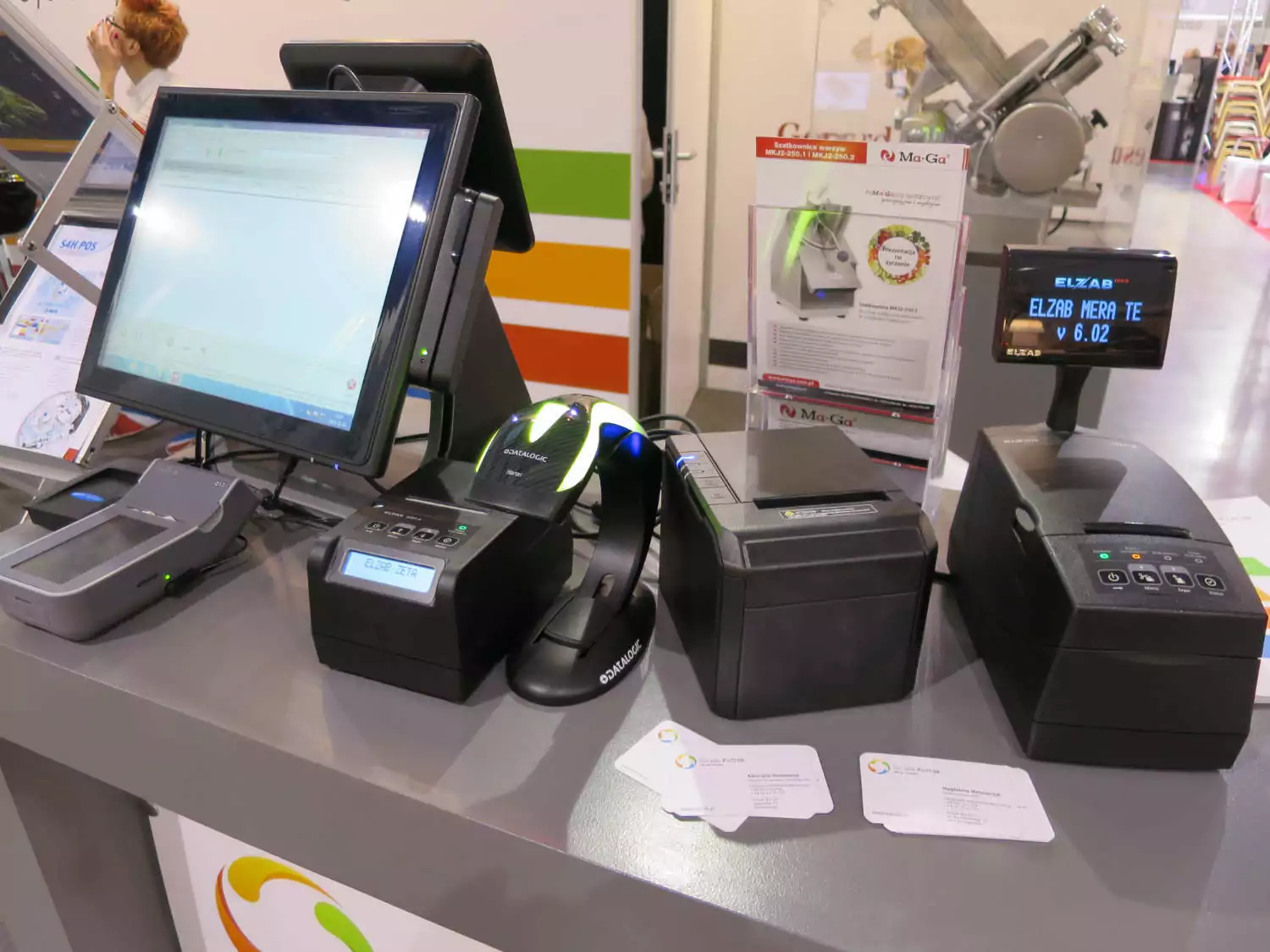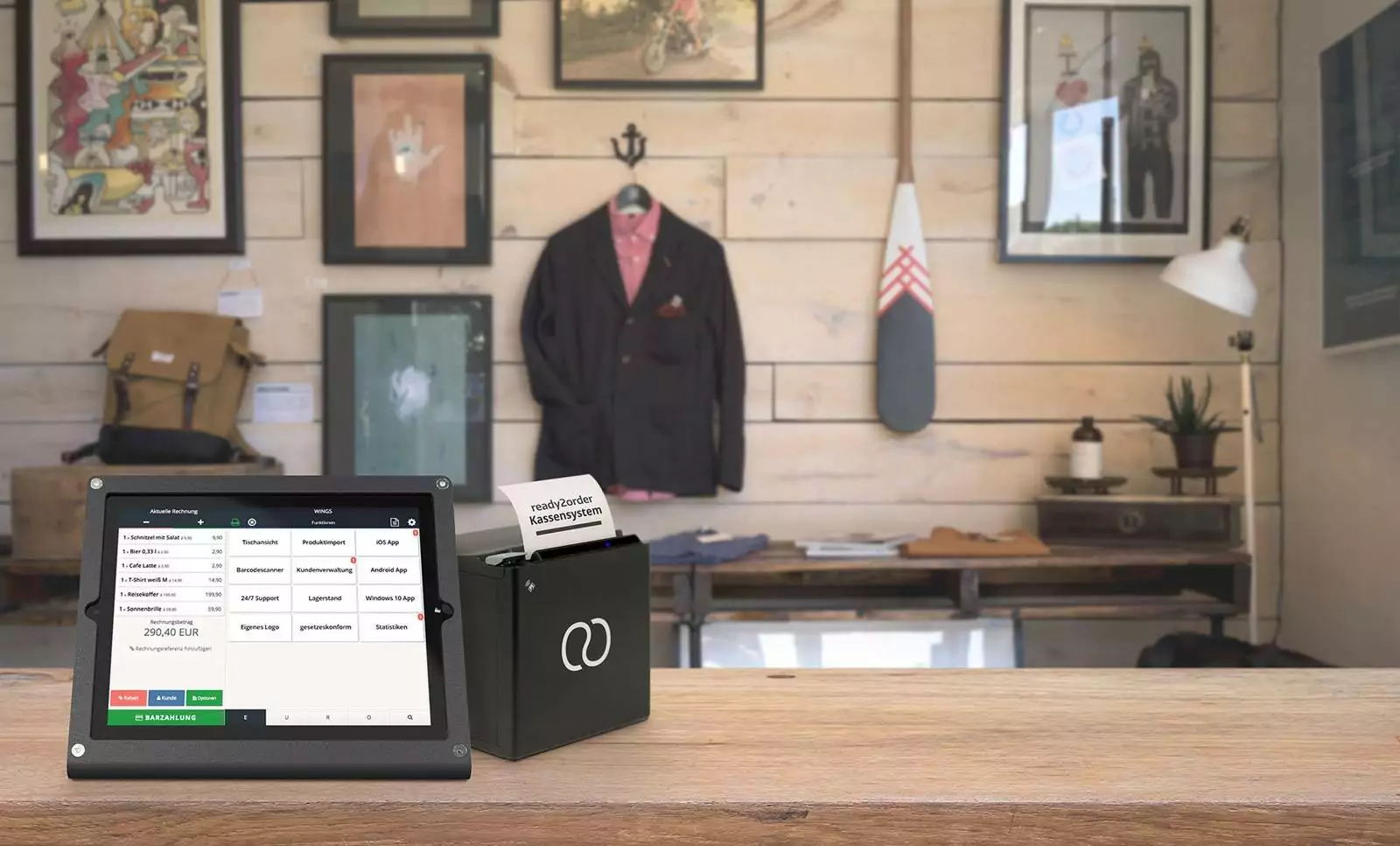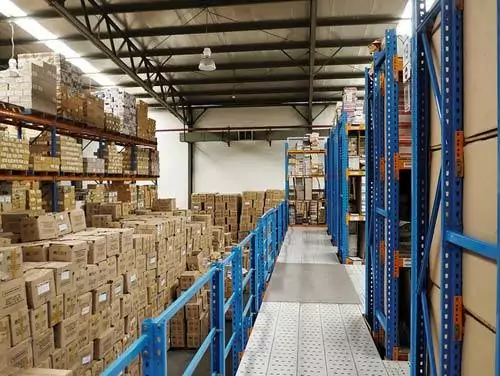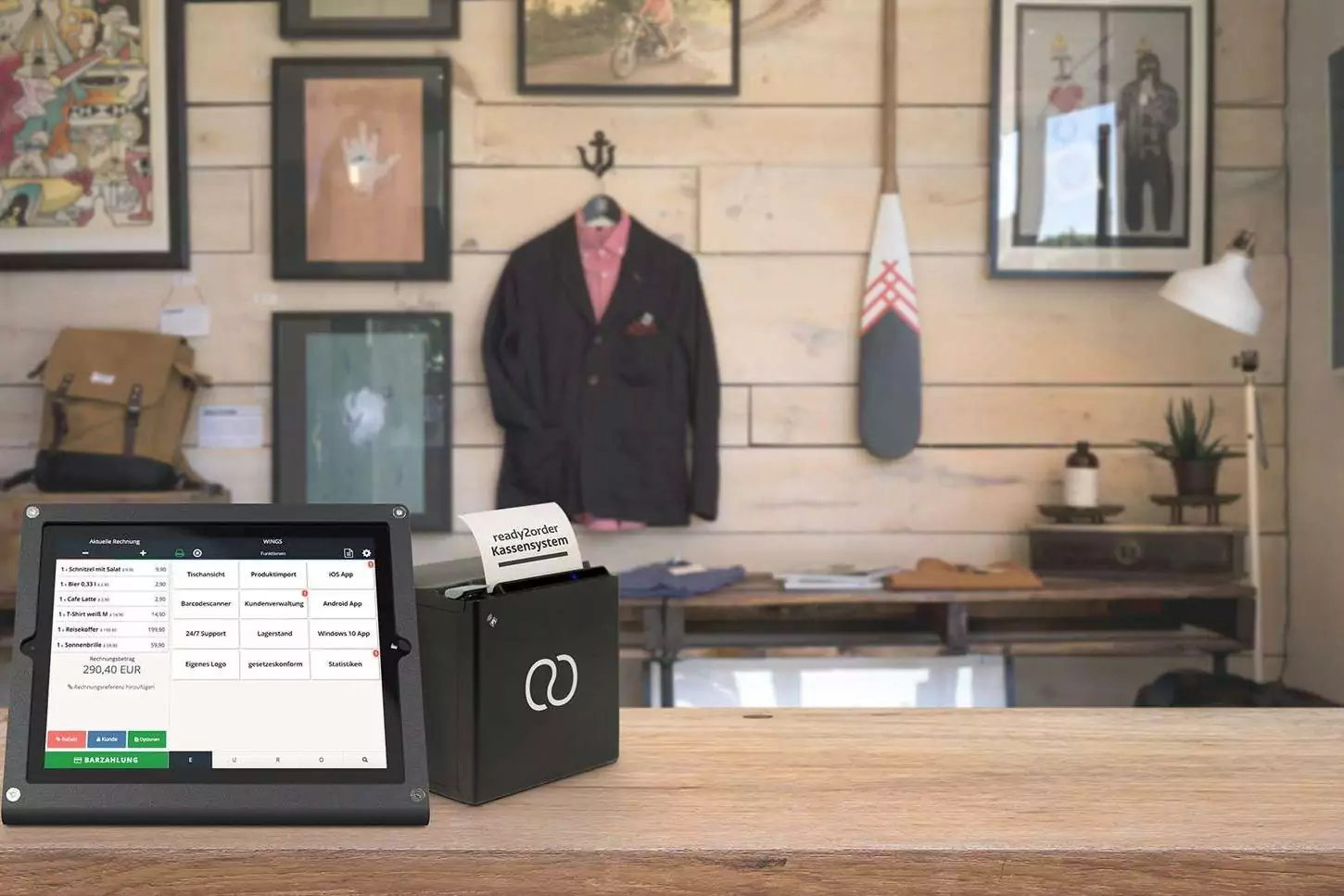Inventory management
8. September 2023
Advance Shipping Notice
An Advance Shipping Notice (ASN), also advice note or avis, is a piece of preliminary information…
21. January 2022
Definition of replenishment in transport and intralogistics
Replenishment is a fundamentally important process in today's enterprise resource planning. With…
7. July 2020
Rack zones – Overview
A storage rack, both in intralogistics and retail, can be divided into different horizontal racking…
7. May 2020
The Bullwhip effect
The bullwhip effect describes coordination and communication problems in multi-stage supply chains…
7. May 2020
Radio Frequency Identification (RFID)
Radio Frequency Identification (RFID) is a technology for the unambiguous and contact-free…
1. April 2020
Turnover rate and Rotation of goods: Fast and slow movers
The inventory turnover, also known as the inventory turnover rate or inventory turnover…
25. November 2019
Allocation strategies for warehouse and picking systems/warehouse operation strategies
In a company, it is vital to set goals before developing strategies and to monitor their…
6. February 2019
Advantages and disadvantages: centralized and decentralized warehouse
In distribution logistics, the determination of warehouse locations represents a strategic…
7. November 2018
Inventory in companies and in logistics
In the inventory, the assets of a company are determined on a key date; in this way, assets and…
28. September 2018
Uses of Blockchain technology in logistics / intralogistics
Blockchain is an enabling technology. Just like the Internet, it harbors technological properties…
29. August 2018
Storage maintenance costs – warehousing costs or storage costs
Trading companies and manufacturing companies usually have a warehouse or distribution centre. Raw…
31. July 2018
Point of sale systems, warehouse management and branch logistics
A cash register system, also known as a POS system, is software that documents a specific financial…
27. June 2018
The range of storage
The range of storage is a key figure which expresses the internal security of supply by own stocks…
28. November 2017
At a glance: the enterprise resource planning system
An enterprise resource planning system is a software that ensures a smooth flow of commercial…
1. August 2017
Product Lifecycle Management (PLM)
The term Product Lifecycle Management, PLM for short, describes a holistic approach to pooling…
12. May 2017
The Supply Chain Management (SCM)
Supply chain management (SCM) stands for the monitoring process as well as the coordination and…
30. March 2017
Conveying aids in intralogistics
In intralogistics, conveying equipment is used to combine individual goods into larger load units.…
22. March 2017
Order picking times – Dead time
Dead time is an unproductive but unavoidable so-called auxiliary time, which arises during picking…
23. February 2017
Advantages of RFID technology over barcodes
What advantages does RFID radio technology have over barcodes? This question has also been on the…
9. February 2017
The storage location management
The storage location management ensures that a storage location is recorded or occupied in width,…
12. January 2017
Materials management in production and logistics
Materials management controls the material flow within a company as well as order-related material…
19. September 2016
Distributed Order Management
Distributed Order Management basically the consideration of all companies involved in an order as…
24. August 2016
Inventory costs
Inventory costs are costs that arise from the movement of product goods in the warehouse or…
19. July 2016
Inventory management in intralogistics, incl. stock and stock reconciliation
Inventory management stands for the complete digital recording of all stock movements in…
25. April 2016
Definition – WMS – The Warehouse Management System
The Warehouse Management System (WMS) is an indispensable software for the control and…
7. April 2016
CMR: the consignment note
The term CMR comes from the French, Convention relative au Contrat de transport international de…
7. March 2016
Stock Keeping Unit (SKU)
The acronym SKU, Stock Keeping Unit, describes a clearly identifiable storage unit. A storage unit…
26. January 2016
The Newsvendor Model in SCM
Many supply chain management (SCM) approaches can be explained using the Newsvendor Model (NVM).…
15. January 2016
The cost of unused opportunities in supply chain management
No company can afford not to have the cost side under control. The figures from financial…
14. December 2015
Ship to Line / the direct provision of goods
In the case of ship to line or direct provision of inventory, the supplier/manufacturer assembles…
7. December 2015
Definition – The Milk Run Concept
The milk run concept is a method for optimizing inter-company procurement logistics, often used in…
1. December 2015
The degree of utilisation/the capacity utilisation
The degree of capacity utilisation describes the proportion of the capacity used by…
21. September 2015
Information in intralogistics
Information describes the meaningful content of a message, which is of value for the recipient. The…
18. September 2015
Returns processing
Returns handling describes several processes in the return of goodsordered - mostly - online. They…
14. September 2015
Storage capacity/storage economy
Storage capacity is defined as the maximum number of loading units that a warehouse can hold. It…
26. August 2015
Host system (ERP system)
The host system (usually an ERP system) is a central data processing system that can be accessed…
22. July 2015
Heijunka lean method
The Japanese lean method Heijunka pushes a production where the production flow of the parts market…
10. July 2015
Assortment width and assortment depth
The assortment available in a warehouse and in the retail trade is subdivided into the assortment…
14. April 2015
The distribution center
A distribution center is an interface in the form of a building complex that functions exclusively…
23. February 2015
The barcode – EAN, GTIN and GS1 standard
Barcodes have successfully established themselves over other systems in recent years. The barcode…
8. January 2015
Temperature-controlled logistics (environmental measurement)
The market for temperature-controlled logistics in particular has been growing in volume over the…
2. December 2014
Overview and definition of ident carriers
In order to be able to identify an object without any doubt throughout the entire logistics chain,…
16. September 2014
Data Mart: the local warehouse database analysis
Data mart describes the use of a database that is only a department-specific part of the overall…
8. September 2014
Overview – Serial Shipping Container Code (SSCC)
Each shipping unit, which can be a pallet or a carton, for example, is automatically assigned a…
27. June 2014
Defintion and advantages of consignment
The term consignment refers to a form of delivery of goods in which the supplier acts as consignor…
19. March 2014
Master data
In intralogistics, master data, also known as primary data or reference data, is data that contains…
3. February 2014
Storage and retrieval machine
A storage and retrieval machine (SRM) is a storage device with which load units can be stored,…
14. November 2013
Overview of common manufacturing principles
Different principles can be applied in manufacturing. Some products are manufactured according to…
17. September 2013
Mobile and stationary loading units
Loading units are collections of goods that are transported, transhipped or stored as they pass…
15. July 2013
Overview of “Last-in-First-out” and “First-in-First-out” storage strategies
LIFO (last-in-first-out) and FIFO (first-in-first-out) are two different strategies for storing and…
- 1
- 2
8. September 2023
Advance Shipping Notice
An Advance Shipping Notice (ASN), also advice note or avis, is a piece of preliminary information…
21. January 2022
Definition of replenishment in transport and intralogistics
Replenishment is a fundamentally important process in today's enterprise resource planning. With…
7. July 2020
Rack zones – Overview
A storage rack, both in intralogistics and retail, can be divided into different horizontal racking…
7. May 2020
The Bullwhip effect
The bullwhip effect describes coordination and communication problems in multi-stage supply chains…
7. May 2020
Radio Frequency Identification (RFID)
Radio Frequency Identification (RFID) is a technology for the unambiguous and contact-free…
1. April 2020
Turnover rate and Rotation of goods: Fast and slow movers
The inventory turnover, also known as the inventory turnover rate or inventory turnover…
25. November 2019
Allocation strategies for warehouse and picking systems/warehouse operation strategies
In a company, it is vital to set goals before developing strategies and to monitor their…
6. February 2019
Advantages and disadvantages: centralized and decentralized warehouse
In distribution logistics, the determination of warehouse locations represents a strategic…
7. November 2018
Inventory in companies and in logistics
In the inventory, the assets of a company are determined on a key date; in this way, assets and…
28. September 2018
Uses of Blockchain technology in logistics / intralogistics
Blockchain is an enabling technology. Just like the Internet, it harbors technological properties…
29. August 2018
Storage maintenance costs – warehousing costs or storage costs
Trading companies and manufacturing companies usually have a warehouse or distribution centre. Raw…
31. July 2018
Point of sale systems, warehouse management and branch logistics
A cash register system, also known as a POS system, is software that documents a specific financial…
27. June 2018
The range of storage
The range of storage is a key figure which expresses the internal security of supply by own stocks…
28. November 2017
At a glance: the enterprise resource planning system
An enterprise resource planning system is a software that ensures a smooth flow of commercial…
1. August 2017
Product Lifecycle Management (PLM)
The term Product Lifecycle Management, PLM for short, describes a holistic approach to pooling…
12. May 2017
The Supply Chain Management (SCM)
Supply chain management (SCM) stands for the monitoring process as well as the coordination and…
30. March 2017
Conveying aids in intralogistics
In intralogistics, conveying equipment is used to combine individual goods into larger load units.…
22. March 2017
Order picking times – Dead time
Dead time is an unproductive but unavoidable so-called auxiliary time, which arises during picking…
23. February 2017
Advantages of RFID technology over barcodes
What advantages does RFID radio technology have over barcodes? This question has also been on the…
9. February 2017
The storage location management
The storage location management ensures that a storage location is recorded or occupied in width,…
12. January 2017
Materials management in production and logistics
Materials management controls the material flow within a company as well as order-related material…
19. September 2016
Distributed Order Management
Distributed Order Management basically the consideration of all companies involved in an order as…
24. August 2016
Inventory costs
Inventory costs are costs that arise from the movement of product goods in the warehouse or…
19. July 2016
Inventory management in intralogistics, incl. stock and stock reconciliation
Inventory management stands for the complete digital recording of all stock movements in…
25. April 2016
Definition – WMS – The Warehouse Management System
The Warehouse Management System (WMS) is an indispensable software for the control and…
7. April 2016
CMR: the consignment note
The term CMR comes from the French, Convention relative au Contrat de transport international de…
7. March 2016
Stock Keeping Unit (SKU)
The acronym SKU, Stock Keeping Unit, describes a clearly identifiable storage unit. A storage unit…
26. January 2016
The Newsvendor Model in SCM
Many supply chain management (SCM) approaches can be explained using the Newsvendor Model (NVM).…
15. January 2016
The cost of unused opportunities in supply chain management
No company can afford not to have the cost side under control. The figures from financial…
14. December 2015
Ship to Line / the direct provision of goods
In the case of ship to line or direct provision of inventory, the supplier/manufacturer assembles…
7. December 2015
Definition – The Milk Run Concept
The milk run concept is a method for optimizing inter-company procurement logistics, often used in…
1. December 2015
The degree of utilisation/the capacity utilisation
The degree of capacity utilisation describes the proportion of the capacity used by…
21. September 2015
Information in intralogistics
Information describes the meaningful content of a message, which is of value for the recipient. The…
18. September 2015
Returns processing
Returns handling describes several processes in the return of goodsordered - mostly - online. They…
14. September 2015
Storage capacity/storage economy
Storage capacity is defined as the maximum number of loading units that a warehouse can hold. It…
26. August 2015
Host system (ERP system)
The host system (usually an ERP system) is a central data processing system that can be accessed…
22. July 2015
Heijunka lean method
The Japanese lean method Heijunka pushes a production where the production flow of the parts market…
10. July 2015
Assortment width and assortment depth
The assortment available in a warehouse and in the retail trade is subdivided into the assortment…
14. April 2015
The distribution center
A distribution center is an interface in the form of a building complex that functions exclusively…
23. February 2015
The barcode – EAN, GTIN and GS1 standard
Barcodes have successfully established themselves over other systems in recent years. The barcode…
8. January 2015
Temperature-controlled logistics (environmental measurement)
The market for temperature-controlled logistics in particular has been growing in volume over the…
2. December 2014
Overview and definition of ident carriers
In order to be able to identify an object without any doubt throughout the entire logistics chain,…
16. September 2014
Data Mart: the local warehouse database analysis
Data mart describes the use of a database that is only a department-specific part of the overall…
8. September 2014
Overview – Serial Shipping Container Code (SSCC)
Each shipping unit, which can be a pallet or a carton, for example, is automatically assigned a…
27. June 2014
Defintion and advantages of consignment
The term consignment refers to a form of delivery of goods in which the supplier acts as consignor…
19. March 2014
Master data
In intralogistics, master data, also known as primary data or reference data, is data that contains…
3. February 2014
Storage and retrieval machine
A storage and retrieval machine (SRM) is a storage device with which load units can be stored,…
14. November 2013
Overview of common manufacturing principles
Different principles can be applied in manufacturing. Some products are manufactured according to…
17. September 2013
Mobile and stationary loading units
Loading units are collections of goods that are transported, transhipped or stored as they pass…
15. July 2013
Overview of “Last-in-First-out” and “First-in-First-out” storage strategies
LIFO (last-in-first-out) and FIFO (first-in-first-out) are two different strategies for storing and…


















































































